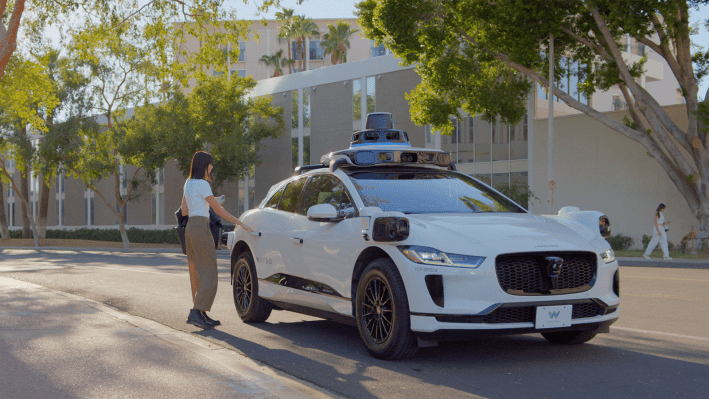In a win for the autonomous vehicle industry, California regulators have given the green light to Cruise and Waymo to offer commercial robotaxi services across San Francisco 24 hours a day, seven days a week.
The commission voted 3-1 in support of the expansions; Commissioner Genevieve Shiroma cast the sole “no” vote.
The California Public Utilities Commission’s (CPUC) votes in favor of the AV companies come in spite of mounting opposition from residents and city agencies that have urged caution and a more incremental approach to expansion. Since AVs hit the streets of San Francisco, there have been numerous instances of vehicles malfunctioning and stopping in the middle of the street — referred to as “bricking” — blocking the flow of traffic, public transit and emergency responders.
Cruise and Waymo both offer limited paid services in San Francisco — Cruise charges for driverless rides at night, and Waymo charges for its robotaxi service throughout the city at any time of day, but with a human safety operator present. The permit extension allows the companies to expand their services significantly and with no limit on the number of robotaxis they can put on the roads.
While Cruise and Waymo have both said they would expand incrementally, and not all at once, scale is vital for the companies’ success. Developing, testing and deploying AV tech has cost Cruise and Waymo millions of dollars. Waymo has had to pull back on operations this year after Alphabet issued a slew of layoffs in the first quarter. In July, the company shut down its self-driving trucks program to shift all its available resources to ride-hailing. If either Waymo of Cruise are to get a return on their investments, they need to grow exponentially in San Francisco and beyond.
The CPUC ended up voting to grant the permit expansions because it did not anticipate the robotaxi services to result in significant safety risks. The agency’s primary role is to promote the public interest by ensuring safe, reliable and affordable utility services. As long as Cruise and Waymo’s services meet those requirements, the CPUC doesn’t have the authority to limit them.
Many who spoke during the public comment period at the CPUC’s hearing called out the companies for not deploying robotaxis that are Americans with Disabilities Act compliant. They asked the CPUC to require clearer guidelines for companies to become ADA-compliant.
“Can driverless vehicles assist passengers who need escorting to and from the vehicle?,” said Laura Massey, a member of San Francisco’s Paratransit Coordinating Council. “Can they load and secure mobility aids like wheelchairs and walkers? Can a driverless car spot a blind passenger waiting? Can it call out to that blind passenger that it has arrived to pick them up?”
Others expressed concerns that Waymo and Cruise discriminate against the unbanked and those who aren’t digitally literate; would only add thousands of more cars to streets that should be focusing more on micromobility; and are taking away jobs in a city that is suffering from increasing levels of homelessness. A handful of taxi and ride-hail drivers spoke at the hearing saying they were fearful of losing their jobs and being unable to support their families if robotaxis prevailed.
Callers critical of autonomous vehicles also citied CPUC Commissioner John Reynolds‘ past role as “Managing Counsel at Cruise” as a conflict of interest.
Many of the public comments in favor of the applications to expand AV ride-hailing came from those representing the interests of people who are blind.
“When I get into a Waymo vehicle, I feel not only that I’m able to get to where I need to be on my own terms, which is huge, but I’m able to do so without the fear of being harassed, groped, assaulted or attacked,” said Jessie Wollensky, who identified as a blind woman.
Other public comments in favor called on residents not to fear technological progress and pointed out that AVs could make streets safer and greener. Some people representing unions like Local 87 said they believed Cruise and Waymo would bring more unionized jobs to the city.
Daniel Gregorski, 27, one of Cruise’s beta testers, told TechCrunch he was excited about the permit expansion. He works as a nurse assistant at night and finds the experience of riding in an autonomous vehicle to be safer than riding in a taxi.
“People like me who get off at 1am who still need to keep that heightened amount of safety when you’re with a human Uber driver,” said Gregorski. “Being with a robot driver, I feel a little bit safer. I’m in control of the music, the temperature, so I could truly feel comfortable during my ride.”
The companies fought hard for their win. Cruise in particular went on the offensive in recent months. The company took out full-page ads in major newspapers across the U.S. claiming humans are terrible drivers and robotaxis could save lives. Cruise also launched a petition this week, urging the CPUC to grant its permit expansion, and has amassed 2,600 signatures.
